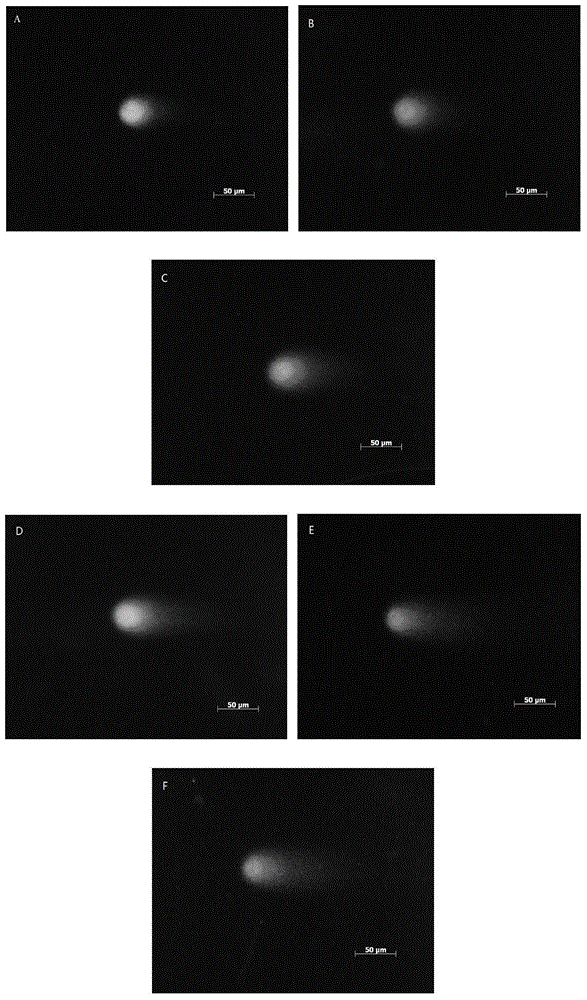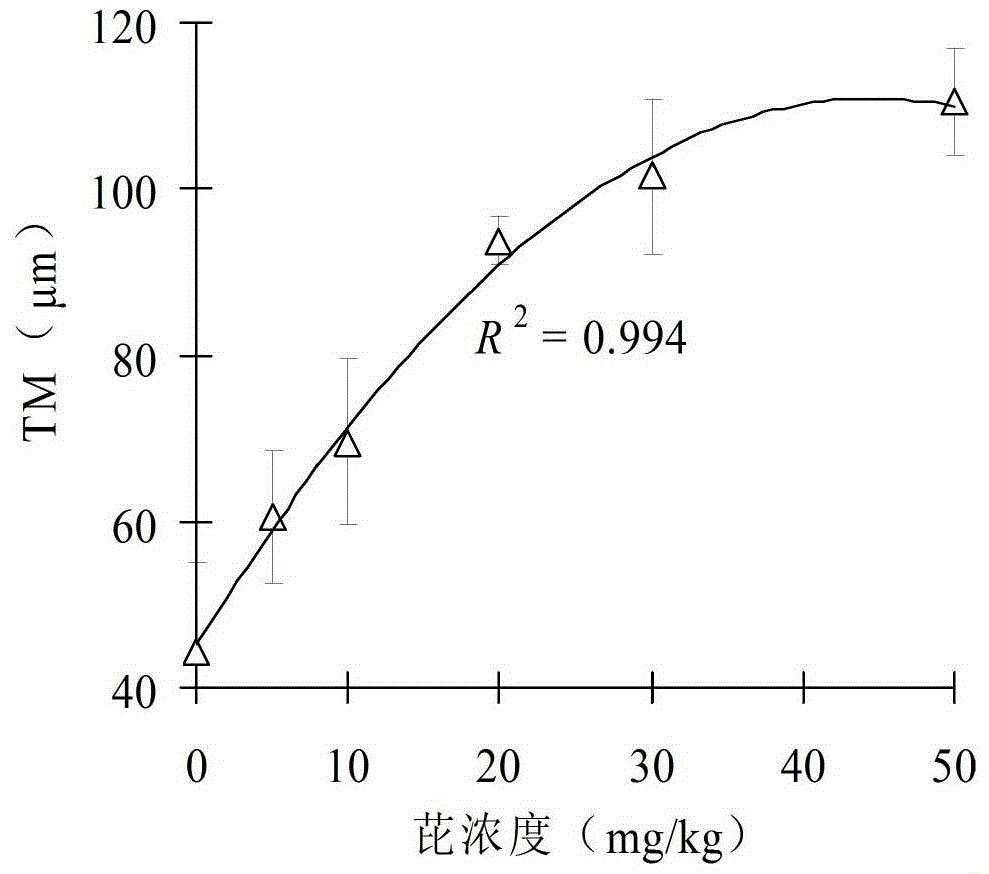A method for evaluating the genotoxicity of polycyclic aromatic hydrocarbons using plant comet experiment
A comet experiment, genotoxicity technology, used in measurement devices, material analysis by electromagnetic means, instruments, etc.
- Summary
- Abstract
- Description
- Claims
- Application Information
AI Technical Summary
Problems solved by technology
Method used
Image
Examples
Embodiment 1
[0022] This embodiment includes the following steps:
[0023] 1) Preparation of contaminated quartz sand: select commercial quartz sand, pass through a 30-mesh sieve, clean the quartz sand and dry it at 105°C. Prepare acetone solution with a certain concentration of phenanthrene and pyrene, add them to quartz sand and mix evenly, then put the treated quartz sand in a fume hood, and after the acetone is completely volatilized, prepare a solution containing 0 to 50 mg / kg of phenanthrene and pyrene of quartz sand.
[0024] 2) Seed cultivation and poisoning treatment: select Vicia faba seeds of the same size, plump and insect-free, soak in 5% sodium hypochlorite for 10 minutes for surface disinfection, and rinse with deionized water. Soak in deionized water at room temperature for 24 hours to make the seeds fully imbibition, and change the water 2 to 3 times during this period. After soaking, the seeds were planted in PAHs-free quartz sand, and cultivated at 20°C for 4 days (14 ...
PUM
 Login to View More
Login to View More Abstract
Description
Claims
Application Information
 Login to View More
Login to View More - R&D
- Intellectual Property
- Life Sciences
- Materials
- Tech Scout
- Unparalleled Data Quality
- Higher Quality Content
- 60% Fewer Hallucinations
Browse by: Latest US Patents, China's latest patents, Technical Efficacy Thesaurus, Application Domain, Technology Topic, Popular Technical Reports.
© 2025 PatSnap. All rights reserved.Legal|Privacy policy|Modern Slavery Act Transparency Statement|Sitemap|About US| Contact US: help@patsnap.com



